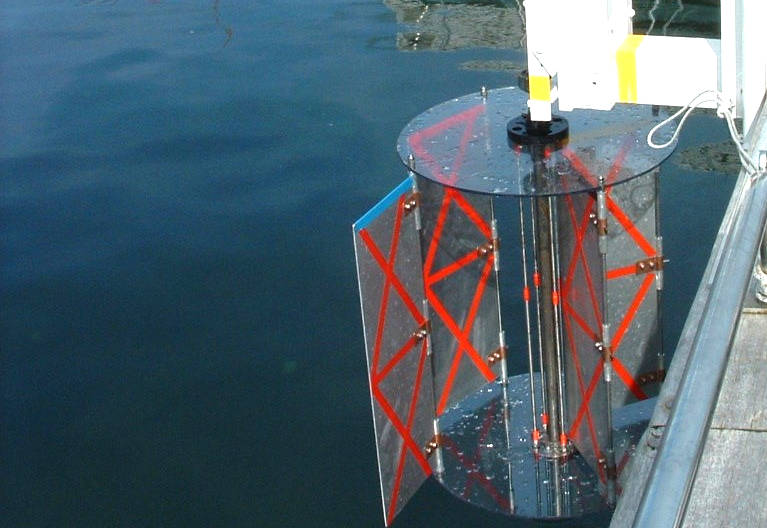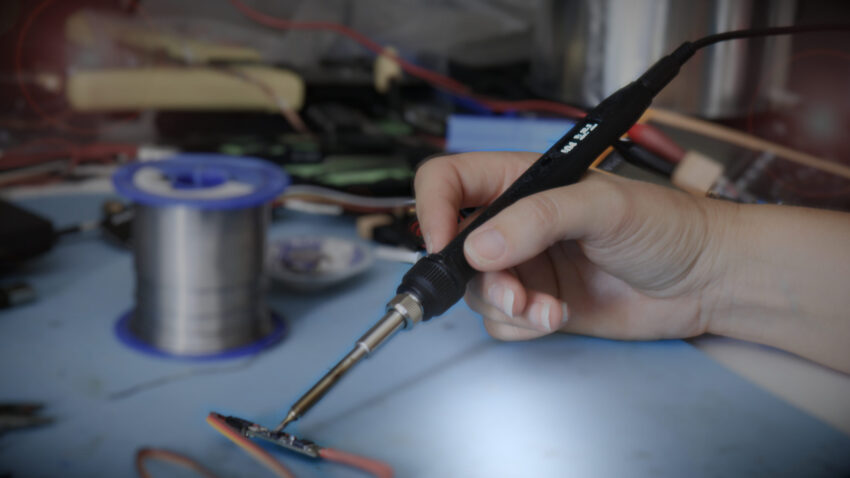
Kingston University is testing a hydroelectric turbine prototype from a pontoon in the Thames.
Developed by Hales Marine Energy near Eastbourne, the aim is to create a turbine that can be used in the sea as well as rivers, sitting on a submergible tank that normally rests on the sea bed, but can be floated to the surface for maintenance.
The Thames prototype is 1m diameter and produces ~1kW, while it is estimated that 5m inshore sea turbines would generate round 20kW.
“It’s based on the traditional water wheel, but mounted on a vertical axis,” said designer Paul Hales. “Using modern engineering and materials, it is possible immerse the whole turbine into the tidal flow.”
Blades on the non-drive side are shaped and hinged to present a minimum resistance.
“The large blade area on the drive side produces very high amounts of torque at low speed, in the range of 10 – 20rpm,” said Hales. “Coupled with modern permanent magnet generators that can start producing electricity rotations as low as 2rpm, my turbine can offer the possibility of tidal generation worldwide.”
Sensor Technology of Oxfordshire brought this project to Electronics Weekly’s attention, as its ‘TorqSense’ wireless torque sensor is being used on the prototype.
The Thames installation is lead by Kingston University engineer Rod Bromfield.
“One of the engineering issues that Rod faced was the relatively slow revolution of the turbine, in this test below 50rpm,” according to Sensor Technology. “This helped define the choice of the TorqSense, but it is also a key feature of the Hales turbine: slow speed means less stress on moving parts and therefore less servicing. It also minimises habitat disturbance.”
The turbine is installed near Richmond Bridge and can power an array of lights on the pontoon.







